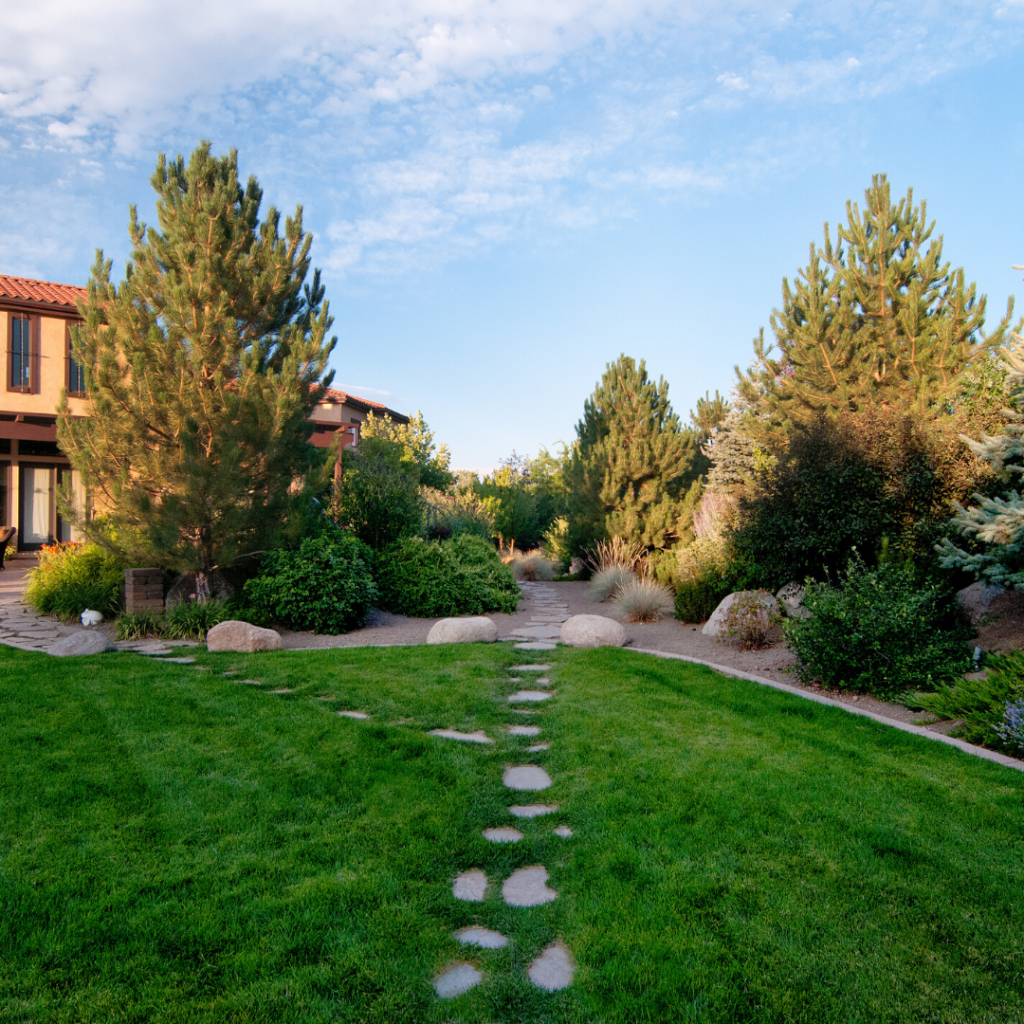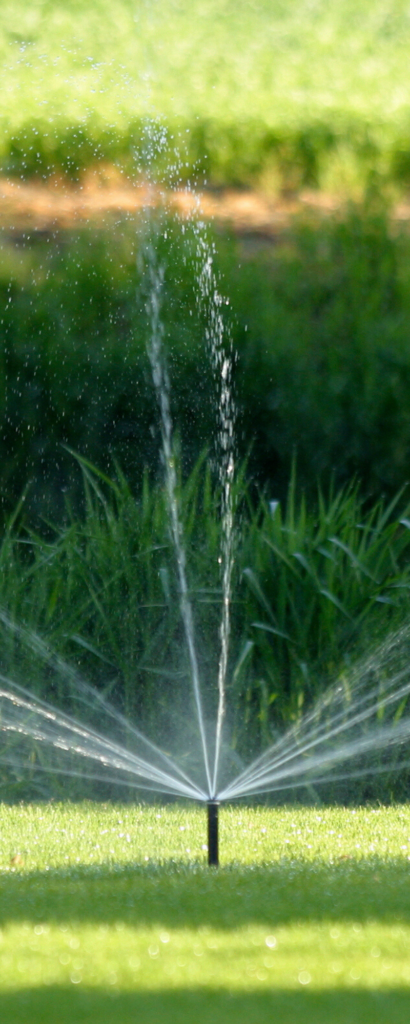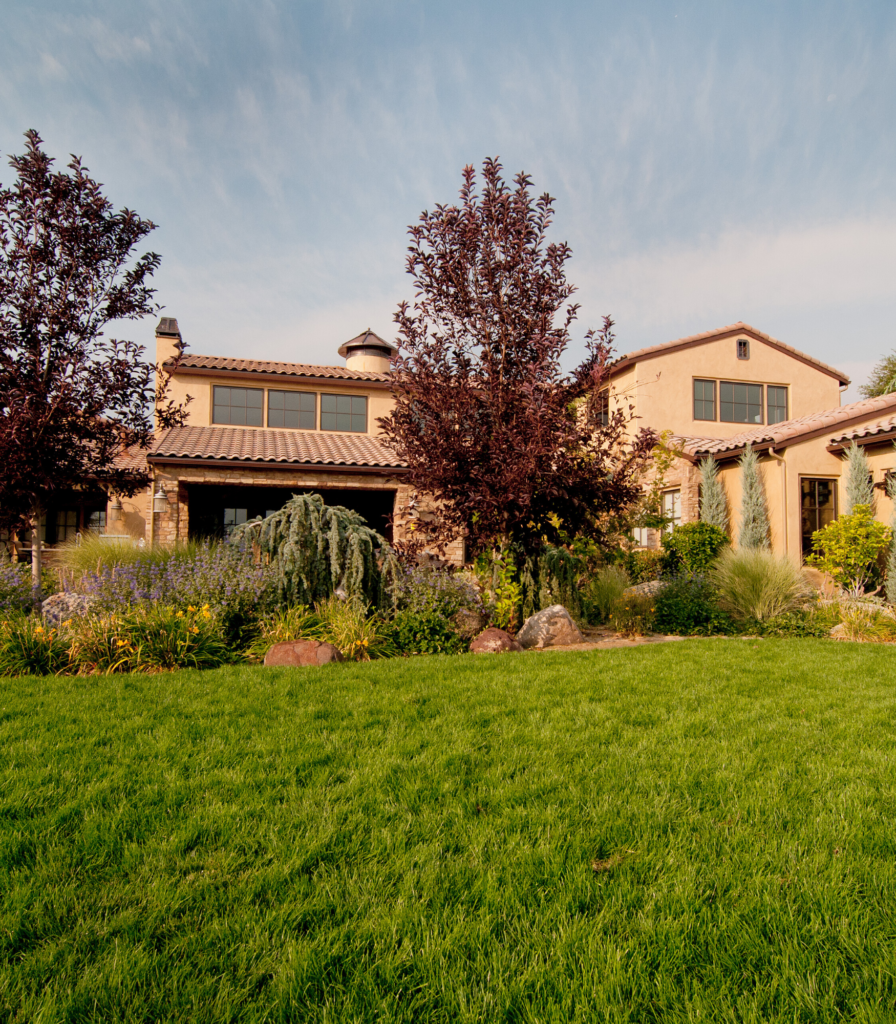
This month is National Lawn Care month and what better way to celebrate than to learn about lawn care?
First, let’s discuss why we love our lawns. Many of you have children or dogs and enjoy playing with them in your backyard. Other may enjoy the cooling effect of their lawns during hot summer months. Your lawn is a place to lay out a blanket and have a picnic with your significant other. Or pitch a tent and do backyard camping with your kids. Our lawns provide us with so many memories and when cared for well, they will last a very long time.
One important step in lawn care that often gets missed is aeration and the best time to aerate is now!
Why aerate turfgrass?
Too much thatch is not a good thing
As part of a natural process, layers of dead grass blades in various stages of decomposition build-up over time between the active grass and roots. This layer is called thatch. It’s healthy for turfgrass to have up to ½ inch of thatch because it helps to “insulate against temperature extremes and fluctuations in soil moisture,” according to Penn State Extension.Though it’s good to have some thatch, a thatch layer over 1 inch can cause issues for your lawn.
- Watering Issues: It can be challenging to effectively water because the thick thatch layer acts as a barrier prohibiting water from getting through to the root zone. You will need to apply significantly more water to keep your lawn alive and healthy, resulting in unnecessary water waste.
- Drought Stress: Too much thatch dries out quickly not allowing for water to reach the root zone. This can cause root death and overall plant decline, especially in hotter months.
- Lack of Oxygen: A thick thatch layer reduces oxygen’s ability to get to turfgrass roots. Roots need oxygen to take up water and nutrients, so without oxygen your lawn will suffer.
- Maintenance Issues: Lawns with thick thatch also have issues with maintenance, such as mower scalping from the wheels sinking into the thatch layer.
- Pest and Disease Issues: Thick thatch can increase pest and disease problems and make control harder because some pesticides can’t get through the layer of thatch.


Reasons thatch builds up quickly
- Turfgrass species – Kentucky bluegrass tends to produce more thatch than other species like tall fescue and perennial ryegrass. Most lawns in our region are a blend of these species.
- Soil compaction and waterlogged soil – These types of soil conditions reduce microorganism activity resulting in decreased decomposition of thatch. You will also see a buildup of thatch in habitually overwatered grass.
- Aggressive fertilization – It’s best to fertilize turfgrass once in fall with a slow release fertilizer. Over fertilization is common as we want green grass throughout the growing season, though it contributes greatly to unhealthy turfgrass and increased thatch.

No, it’s not goose poop, it’s aeration cores!
In order to keep thatch buildup under ½ inch, it’s important to maintain prevention practices. It’s recommended to do annual core aeration in spring or fall as well as establish good maintenance practices to keep turfgrass healthy. Good maintenance means fertilizing, watering and cutting grass correctly. For more information on turfgrass care visit Utah State University’s website on lawn care. Aeration is the process of drilling out cores or plugs from lawn and depositing them on the surface. It helps reduce soil compaction, ultimately increasing the movement of air through the soil, “thereby increasing microbial activity and breakdown of thatch,” according to Penn State Extension. Aeration also removes some thatch in the cores, improves the movement of water and nutrients, and encourages deeper root growth for healthier grass. It’s best practice to leave cores on the surface of turfgrass, sometimes being mistaken for goose poop. You can either leave the cores until they crumble apart over time or rake them into the lawn once they dry out.
In spring, Reno Green Landscaping aerates all turfgrass on properties we maintain. For more information on Reno Green’s maintenance services, visit our maintenance page.